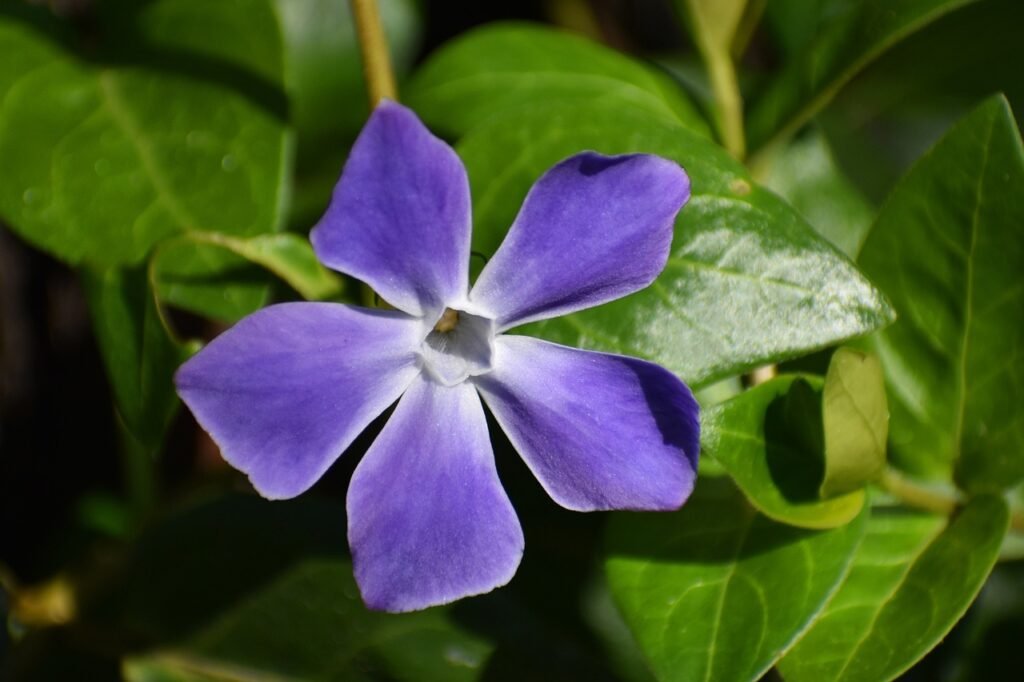Vinca plants, also known as periwinkle flowers, are low-growing, trailing plants with small, delicate blooms in shades of white, pink, or purple. They are often used to provide ground cover in gardens and landscapes due to their ability to spread quickly. Vinca plants are easy to grow and can thrive in various soil conditions, making them a popular choice for both beginner and experienced gardeners.
About Vinca:
Vinca is a genus of flowering plants that includes several different types such as Vinca minor, Vinca major, and Vinca difformis. These plants have a perennial life cycle and are known for their trailing or spreading growth habits.
The bloom season for Vinca generally starts in late spring and continues into fall, providing a prolonged period of colorful flowers. This extended bloom time makes Vinca a popular choice for adding vibrant colors to gardens and landscapes.
Characteristics:
Vinca plants are attractive to bees, butterflies, and hummingbirds, making them beneficial for pollinators. They are also easy to grow and maintain, making them suitable for beginner gardeners. While not edible, Vinca does have a pleasant fragrance. Additionally, Vinca is often used as an ornamental plant due to its fast-growing nature and ability to create dense ground covers.
Growing Conditions:
Vinca plants prefer well-draining soil and thrive in full sun to part shade conditions. They are drought tolerant once established and can tolerate a wide range of soil pH levels. Vinca is a versatile plant that can be grown in various garden settings, including containers, hanging baskets, and flower beds.
Resistance:
Vinca is known for its resistance to deer and rabbits, making it a great option for gardens that face challenges from these pests. In terms of diseases, Vinca is generally resistant to rust, fusarium wilt, downy mildew, and powdery mildew. This resistance further contributes to the plant’s overall ease of maintenance.
| Season | Depth | Height | Spacing | US Hardiness Zone |
|---|---|---|---|---|
| Spring to Summer | 1/4 inch | 6 to 18 inches | 8 to 12 inches | 4 to 11 |
Plant Care Instructions
Light Requirement
Vinca plants can grow in a variety of light conditions, including full sun, partial shade, and even full shade.
Water Need
Vinca plants have moderate water needs. They prefer consistently moist soil, but be careful not to overwater as this can lead to root rot. Allow the top inch of soil to dry out before watering again.
Fertilizer
Vinca plants benefit from regular feeding. Use a balanced fertilizer, such as a 10-10-10, applied every four to six weeks during the growing season. For organic options, consider using compost or an organic granular fertilizer.
Pruning
Pruning is not necessary for Vinca plants. However, you can trim back any overgrown or leggy stems to promote bushier growth.
Toxicity
Vinca plants are considered toxic if ingested. Keep them out of the reach of children and pets.
Common Issues
Common issues that may affect Vinca plants include root rot, powdery mildew, and aphid infestations. Ensure proper drainage and good air circulation to prevent these problems.
Culinary Benefits:
- Vinca flowers add a pop of color and a mild, slightly tangy flavor to salads.
- The leaves of Vinca can be used as a garnish or added to soups and stews for a subtle, earthy taste.
- Some people use Vinca flowers to decorate cakes and other desserts.
- Infusing Vinca flowers in vinegar or oil can create unique dressings and marinades.
Medicinal Benefits:
- Vinca is known for its medicinal properties and has been used in traditional medicine for centuries.
- It contains compounds that are believed to have anti-inflammatory and analgesic effects.
- The leaves of Vinca are used to make herbal tea, which is believed to help with respiratory problems and alleviate coughs.
- Vinca extracts are used in certain pharmaceutical drugs to treat conditions like high blood pressure and chest pain.
- Some studies suggest that Vinca may have potential anti-cancer properties, although more research is needed.
- The plant is also believed to have antibacterial and antifungal properties.
Companion Plants for Vinca:
- Petunias: These colorful flowers add a burst of color and fragrance to your garden, while also repelling aphids.
- Calendula: With its bright yellow petals, calendula attracts beneficial insects like ladybugs that feed on pests.
- Dahlia: Dahlias not only add a touch of elegance to your garden but also repel spider mites and whiteflies.
- Mint: Mint is an excellent companion plant for vinca as it helps keep the soil moist and prevents weed growth.

